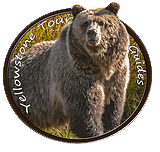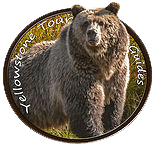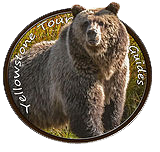Photography Tips for Capturing the Beauty of Yellowstone National Park
Yellowstone National Park is a captivating wonderland of natural beauty located in the western United States. With its unique geological features, stunning landscapes, and diverse wildlife, it’s a photographer’s paradise. However, capturing the beauty of Yellowstone is not a simple task. In this blog post, our Yellowstone tour guides explore some photography tips for capturing the beauty of Yellowstone National Park.
1. Plan your shoot
Before you head out to photograph Yellowstone, it’s essential to do your research and plan your shoot. Research the park’s best photographic hotspots and plan the best time of day to visit them. Consider the weather, the time of year, and the lighting conditions. Different areas of the park may have different lighting conditions, so plan accordingly.
2. Bring the right gear
Yellowstone is a vast park, and traveling long distances may be necessary to reach the best photo locations. Make sure to pack only the essentials and bring a sturdy backpack to keep your gear organized. A tripod is essential for taking steady shots of landscapes and wildlife. A polarizer filter will also come in handy when shooting in bright sunlight.
3. Capture the light
The light in Yellowstone can be both beautiful and tricky to master. The park is full of dynamic light conditions, and it’s essential to be mindful of the changing light throughout the day. The early morning light is soft and soothing, producing warm hues, while the nighttime offers a dramatic and moody atmosphere. The magic hour, which is the hour before sunrise and the hour after sunset, is an excellent time to capture the stunning colors of the landscape.
4. Explore the park’s diverse wildlife
Yellowstone National Park is home to a wide range of wildlife, including bison, elk, moose, bears, wolves, and coyotes. Research the best spots to find wildlife on your photography tour, and always keep a safe distance. Yellowstone’s wildlife can be unpredictable, and it’s essential to respect their space and protect yourself. A zoom lens that can capture distant animals is crucial for wildlife photography. But keep in mind that wildlife photography requires patience and respect for the animals.
5. Use depth of field to convey the scale
Yellowstone’s landscapes are vast and awe-inspiring, and it can be challenging to capture their size and scale in a photograph. Using the right depth of field can help convey the scale and depth of the landscape. A shallow depth of field, produced by a large aperture, can create a sense of depth in your photos. On the other hand, a narrow depth of field creates a more focused image, drawing attention to specific parts of the landscape.
6. Experiment with different angles and perspectives
Get creative with your photography and experiment with different angles and perspectives. Try shooting from a low angle to capture the ground features of Yellowstone, or shoot from a high angle to see the landscape from a bird’s eye view. Shooting from different perspectives can help create new and unique perspectives of the park.
7. Consider the weather
Yellowstone’s weather can be unpredictable, and it’s essential to prepare for all types of conditions. Regardless of your planned shoot, always bring rain gear and warm clothing. Be mindful of the wind’s direction, which can affect your shots, and consider how different weather conditions can enhance or detract from the shot.
Final Thoughts
Yellowstone National Park is a photographer’s dream location, where natural beauty and diverse wildlife are plentiful. Capturing the beauty of Yellowstone requires careful planning, the right gear, and an understanding of the park’s unique lighting and conditions. With these photography tips, you’ll be able to capture the essence and mystique of Yellowstone National Park in your photographs. Contact us to schedule your own adventure now!



